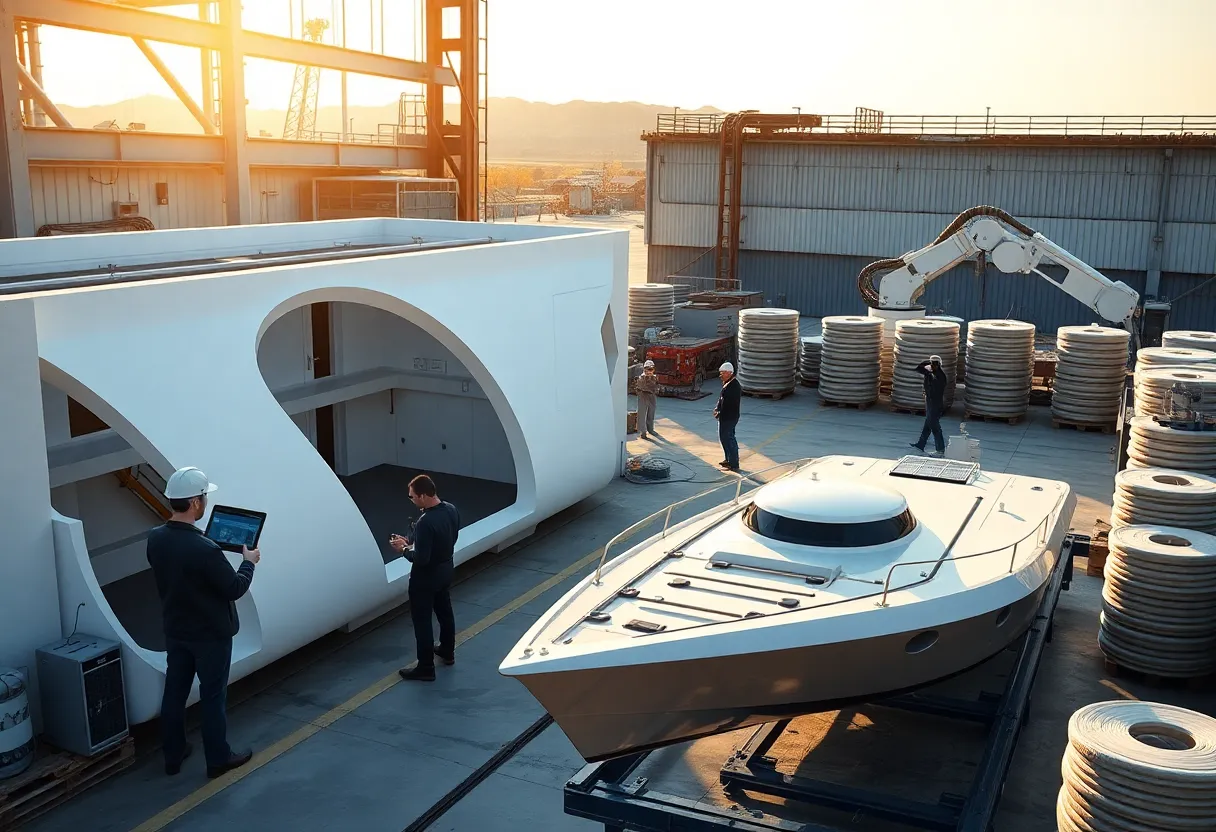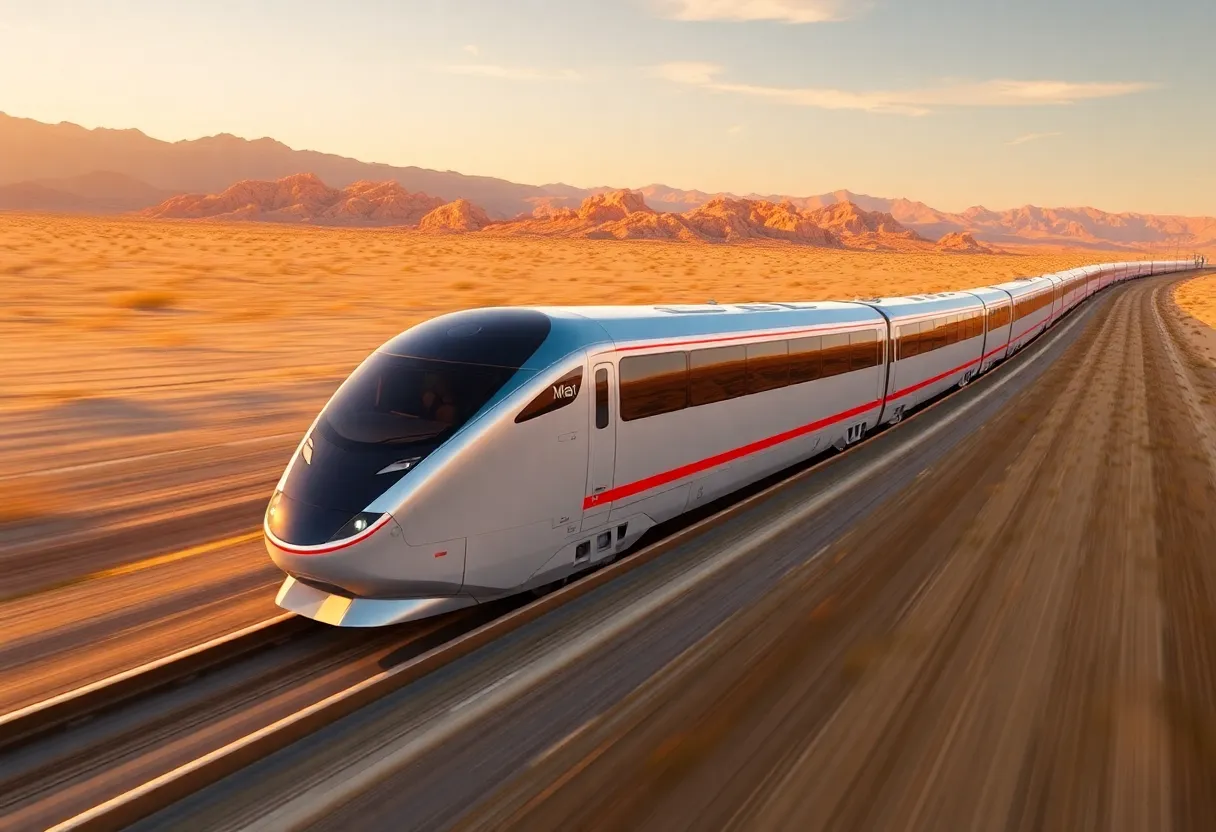Dubai, August 14, 2025
News Summary
3D digital tools — from BIM and VR to large-format 3D printers and AI-driven design — are moving from prototypes into real-world buildings, marine vessels and aerospace components. Projects in Dubai and the Netherlands show full-scale villas, printed hulls and electric passenger abras built faster and with less waste. Luxury yacht makers use robotic printing to halve lead times and cut material waste, while engineers use AI to design metal engine parts for large industrial printers. Benefits include greater precision, faster delivery and reduced waste, though high costs, regulatory hurdles and testing infrastructure remain obstacles to wider adoption.
3D digital tools reshape buildings, boats and rockets
The construction world is changing fast as 3D digital technology moves from testing labs into real projects. Architects, engineers and builders are using tools such as building information modeling (BIM), large-format 3D printing and virtual reality to plan, test and make parts and whole structures. The changes are already visible in cities, on the water and even in aerospace work, where design, speed and waste reduction are driving new ways of building.
What is happening now
The most important effect of these tools is greater precision before a single brick or plate is laid. BIM creates a 3D digital twin of a project that holds details about materials, systems and sequences from design through maintenance. Large-format printers now produce not only models but building sections, boat hulls and yacht superstructures, cutting time and material waste. VR and computational design let teams spot clashes, test lighting and airflow, and change plans without costly on-site corrections.
Major projects and quick gains
Several high-profile projects show the shift from prototype to production. A major Gulf city aims to have a quarter of its buildings 3D-printed within a decade, and local trials have produced 3D-printed villas, a fully electric 11-meter passenger abra and large interior installations made from recycled plastics. In luxury marine work, robotic systems printed aerodynamic superstructure parts that were lighter, used far less material and cut lead times in half compared with traditional fiberglass molds. On the industrial side, large-format hull printing produced a double-curved boat hull in under four days and used automated systems to handle complex overhangs without constant human support.
Maritime additive manufacturing
Printing for boats is now a practical niche. Large printers and composite materials let designers make hulls and fittings with shapes that would be hard or slow to achieve with hand layup or molds. Benefits include less waste, faster turnaround since tooling is not required, and tailor-made parts for patrol boats, work vessels and luxury yachts. Some projects used recyclable high-density polyethylene for hulls and glass-fiber-reinforced thermoplastics for durable parts. Tests show single hull prints may take multiple days but allow welded-on fittings and integrated features like cable channels and self-bailing decks.
Aerospace and AI-driven design
The aerospace sector is testing how AI and metal 3D printers can speed up engine design and reduce cost. AI systems now generate engine geometry and the software that runs it, and those designs can be pushed directly to industrial metal printers with build volumes approaching two metres. Work is moving from small test engines to models that could reach meganewton thrust levels, though full-scale testing and engine stands are still major hurdles due to safety and regulatory needs.
Research, interiors and disaster response
Research groups used 3D-printed clay blocks to build a permanent masonry wall made from hundreds of unique parts that balance light and privacy. Designers printed complex wood-composite panels with joinery systems that avoided nails or glue, and fashion brands have shown beach huts made from natural materials. In disaster relief, 3D printers have been applied to fast shelters and temporary schools, and earlier emergency housing efforts used printing to rebuild after major quakes.
Benefits and limits
Key gains are fewer mistakes, faster work, less material waste and the freedom to create complex shapes. Printed components can use recycled plastics or local mixes, helping sustainability goals. But barriers remain: the cost of large printers and software is high, codes and standards for printed structures are still catching up, and regulators and engineers must prove long-term safety and durability. As machines and methods improve, prices should fall and adoption will widen, especially where speed and customization matter most.
Outlook
In the near term, expect more hybrid workflows where digital models guide conventional construction and printers deliver key parts. On the water and in high-end markets, builders will keep using printing for bespoke and performance parts. In aerospace, AI-led design plus big metal printers could shorten development time for engines, but reliable testing and certification are necessary before broad use. Overall, the move to 3D digital methods looks set to address housing demand, urban growth and resource limits while reshaping how projects are planned and delivered.
FAQ
How do BIM and 3D printing work together?
BIM builds a full digital model that can include exact shapes, materials and systems. That model can feed printers and robot cutters so parts match the design precisely, reducing site rework and clashes between trades.
What are the main benefits of large-format 3D printing for boats?
Large-format printing cuts waste, speeds up production by avoiding molds, allows double-curved and integrated features, and supports recyclable materials for hulls that can be repaired or recycled later.
Can AI-designed rocket engines be trusted?
AI can speed design and suggest complex solutions, but engines still need full test-firing and certification. Scaling up from computer models to flight-ready hardware requires test stands, safety checks and regulatory approval.
Are 3D-printed buildings safe and legal?
Safety and code compliance are evolving. Some printed structures meet existing standards, but broader adoption needs clear regulations and long-term performance data to become routine in mainstream construction.
Where does 3D printing make the most sense today?
It makes sense for complex shapes, bespoke parts, remote or fast-build sites, and markets that value customization or speed, such as luxury yachts, specialized workboats and prototype or mission-critical aerospace components.
Key features at a glance
| Area | Typical use | Main benefit | Typical challenge |
|---|---|---|---|
| Buildings | Full wall sections, villas, interior modules | Less waste, faster assembly, precise fits | Upfront cost, evolving codes |
| Marine | Hull printing, superstructures, custom fittings | Design freedom, reduced tooling time, recyclable materials | Material qualification, long print runs |
| Aerospace | AI-driven engine designs, complex metal parts | Faster iteration, novel topologies, reduced weight | Testing infrastructure, certification hurdles |
| Interiors & Research | Furniture, masonry walls, experimental pavilions | Unique forms, rapid prototyping, sustainable mixes | Scaling to mass production |
Deeper Dive: News & Info About This Topic
Additional Resources
- VoxelMatters: All-Aboard 3D-Printed Boats
- Wikipedia: 3D printing
- 3D Printing Industry: Dubai’s largest 3D-printed lounge interior
- Google Search: 3D printed lounge interior Dubai
- 3Dnatives: 3DExpress — Dubai’s first fully 3D-printed boat
- Google Scholar: 3D printed boats
- The National: Dubai leaps with 3D-printed rocket engines
- Encyclopedia Britannica: 3D printed rocket engines
- BDCNetwork: World’s largest 3D-printed restaurant interior
- Google News: 3D printed restaurant interior
Author: Construction CA News
The CALIFORNIA STAFF WRITER represents the experienced team at constructioncanews.com, your go-to source for actionable local news and information in California and beyond. Specializing in "news you can use," we cover essential topics like product reviews for personal and business needs, local business directories, politics, real estate trends, neighborhood insights, and state news affecting the area—with deep expertise drawn from years of dedicated reporting and strong community input, including local press releases and business updates. We deliver top reporting on high-value events such as the Rose Parade, Coachella, Comic-Con, and the California State Fair. Our coverage extends to key organizations like the California Building Industry Association and Associated General Contractors of California, plus leading businesses in technology and entertainment that power the local economy such as Apple and Alphabet. As part of the broader network, including constructionnynews.com, constructiontxnews.com, and constructionflnews.com, we provide comprehensive, credible insights into the dynamic landscape across multiple states.




